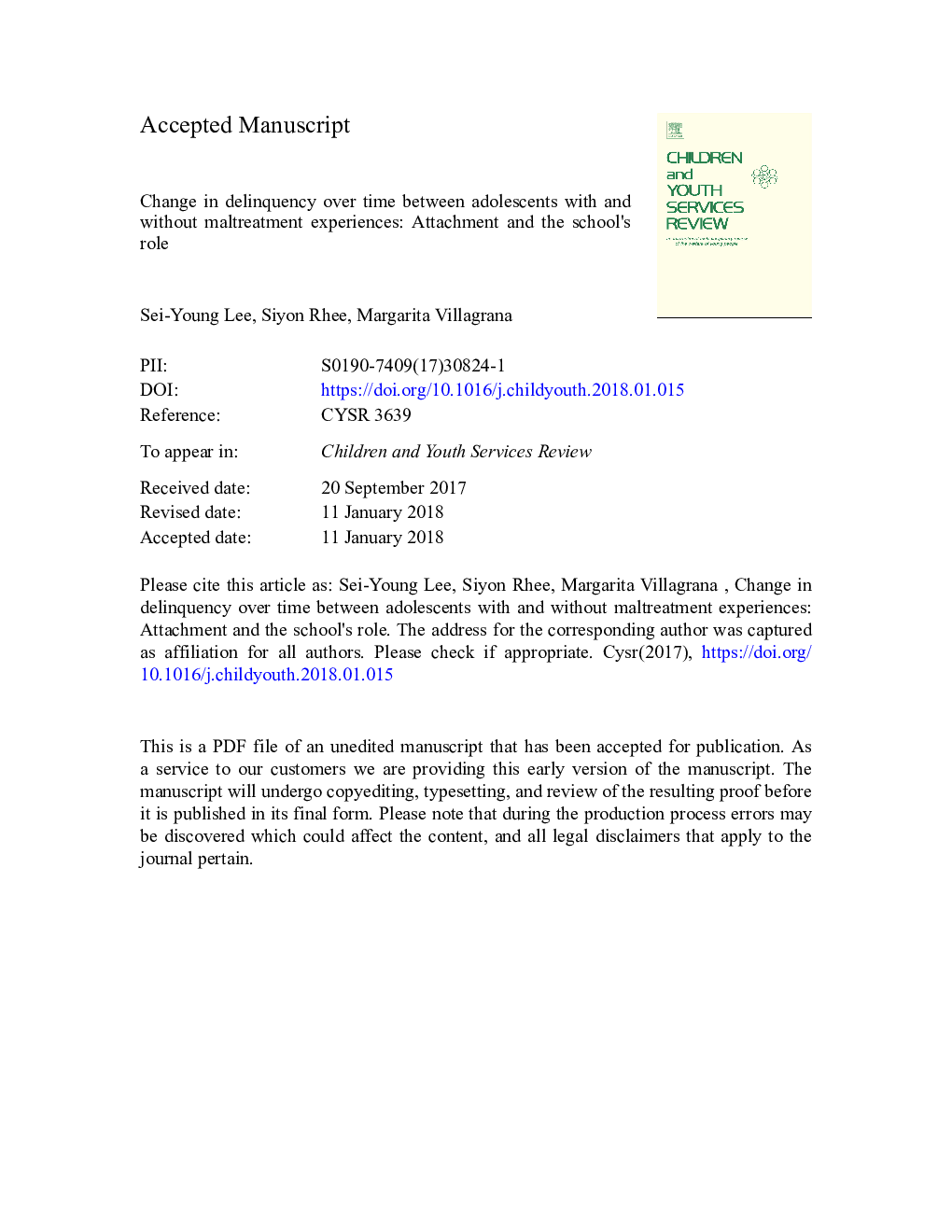| Article ID | Journal | Published Year | Pages | File Type |
|---|---|---|---|---|
| 6833353 | Children and Youth Services Review | 2018 | 42 Pages |
Abstract
Despite the fact that the link between child maltreatment and delinquency has been well-established, relatively few studies have examined contributing factors in the maltreatment-delinquency relationship and the risk of reoffending. Due to unresolved attachment issues with primary caregivers, children and adolescents with a history of maltreatment may seek an alternative figure for attachment in their peer groups, schools and community settings throughout their life. Using a nationally representative sample from the Korea Welfare Panel study (KWP) in South Korea and latent growth modeling, the current study compares delinquency trajectories and the protective role of school attachment on delinquency between adolescents with (nâ¯=â¯348) and without a history of maltreatment (nâ¯=â¯129) across three waves. Moreover, this study investigates whether the timing of maltreatment affects trajectories of delinquency as well as the protective role of school attachment on delinquency over time. Results revealed that adolescents with a maltreatment history are more likely to engage in delinquency at initial levels and growth processes over time, compared to their counterparts. Initial levels and change rates of school attachment are negatively predictive of initial levels and change rates of delinquency for adolescents with maltreatment, compared to those without such an experience. Timing of maltreatment experience affects growth trajectories of delinquency as well as the protective role of school attachment on delinquency. Implications for adolescents with a history of maltreatment are discussed.
Related Topics
Health Sciences
Medicine and Dentistry
Perinatology, Pediatrics and Child Health
Authors
Sei-Young Lee, Siyon Rhee, Margarita Villagrana,
